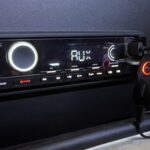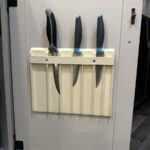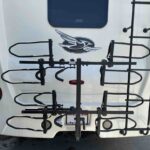Welcome to my blog, where I’m excited to share my hands-on experience with the Power Watchdog Surge Protector made by Hughes Autoformers – a game-changer in the world of RV enthusiasts and road-trippers. If you’re like me and believe that a well-equipped RV is key to a stress-free journey, then you’re in for a treat. In this installation review, we’ll dive into my encounter with the Power Watchdog Surge Protector, specifically the PWD50-EPO-H model, as I incorporated it into my trusty 2021 Jayco Precept 34G RV. As any seasoned traveler knows, a reliable surge protector can mean the difference between a worry-free vacation and unexpected electrical mishaps. Join me as I detail my journey in safeguarding my RV’s power system with the cutting-edge technology of the Power Watchdog Surge Protector.
Choosing the best surge protector for your RV
Selecting the right surge protector for your RV is a pivotal decision that directly influences the safety and longevity of your electrical system. With a myriad of options available, each boasting unique features, it’s essential to be well-informed before making a choice. Here’s a comprehensive guide to help you navigate the process and make an educated decision:
- Voltage Rating: Look for a surge protector that can handle the voltage levels typically encountered in RV parks. A 120V rating is standard for most RVs, but if you have specific power requirements, ensure the surge protector matches them.
- Joule Rating: The joule rating indicates a surge protector’s capacity to absorb energy from power surges. Opt for a higher joule rating to ensure robust protection against sudden spikes in power.
- Type of Protection: Consider surge protectors that offer comprehensive protection, including safeguards against voltage fluctuations, reverse polarity, open ground, and other electrical anomalies. Comprehensive protection ensures your RV’s delicate electronics stay safe.
- Indicator Lights: Choose a surge protector with clear indicator lights that signal its operational status. These lights help diagnose issues and provide real-time information about the electrical conditions your RV is exposed to.
- Weather Resistance: If you frequently travel in various weather conditions, opt for a surge protector with weather-resistant features. This ensures durability and longevity even when faced with rain, snow, or extreme temperatures.
- Portable or Hardwired: Decide between a portable surge protector and a hardwired one. The former offers flexibility but requires manual setup, while the latter offers seamless integration but requires professional installation.
- Integrated Surge Counter: Some surge protectors include a surge counter, indicating how many surges the unit has absorbed. This feature helps you gauge when it might be time to replace the surge protector.
- Warranty and Support: A reputable surge protector manufacturer will provide a warranty that reflects their confidence in the product’s quality. Ensure you have access to reliable customer support in case you have questions or encounter issues.
- User Reviews: Research user reviews and testimonials to gain insights into the real-world performance of the surge protector you’re considering. Hearing from fellow RV enthusiasts can provide valuable perspectives.
- Budget: While it’s important not to compromise on quality, consider your budget and strike a balance between features and cost.
Overview of Power Watchdog surge protector
At the end of 2020, I installed the Power Watchdog 50 Amp PWD50-EPO-H Surge Protector in our 2021 Jayco Precept 34G motorhome. The installation was real easy, but a bit nerve-wracking. It required cutting through the 50 amp power cable to the motorhome and inserting the surge protector in between.
Mounting the surge protector inside the storage bay was easy, it just required pre-drilling a couple small holes and using screws to attach the surge protector to the wall.
Wiring the power wire to the surge protector was also pretty easy. The only difficulty is that the individual wires in the cable were pretty large and a bit difficult to fit in the terminal connectors. I also used a small mounting bracket to secure one end of the cable to the storage bay wall.
I love that it has Bluetooth connectivity and you can monitor it and check for any error codes from an app on your cell phone.
Since it has been installed we haven’t had any real problems. The unit did detect low/over voltage conditions on a couple of occasions which was real nice to be able to identify.
I highly recommend this product to protect your RV.
Installation instructions
- Choose a suitable location: Select a spot in the storage bay that provides easy access to the power source and allows for proper ventilation. Make sure there is enough space to accommodate the surge protector.
- Gather the necessary tools and materials: You will need the following items for the installation of the Power Watchdog 50 Amp Hardwired Surge Protector:
- Appropriate wire gauge and length (consult the surge protector’s manual for specific requirements). Note this may not be needed depending on your setup.
- Wire strippers
- Screwdriver or drill with appropriate bits
- Electrical tape or wire connectors
- Mounting hardware (if included with the surge protector)
- Disconnect the power: Before starting the installation, ensure that the power source is disconnected. This can be done by unplugging the RV from shore power or by turning off the breaker at the power pedestal.
- Mount the surge protector: Depending on the design of your storage bay, you may need to mount the surge protector using the included mounting hardware. Follow the manufacturer’s instructions to securely mount the device in the desired location.
- Prepare the power wiring: Strip the insulation off the power wires, leaving enough bare wire to connect to the surge protector. Ensure the wires are clean and free from any damage. In my case I needed to cut the power cable in half and strip back the 4 wires on each end.
- Connect the power wires: Locate the input and output terminals on the surge protector. Connect the wires from the power source to the input terminals and the wires going to the RV’s electrical system to the output terminals. Follow the surge protector’s manual for specific instructions on wiring configuration and ensure proper polarity.
- Secure the wire connections: Use wire connectors or electrical tape to secure and insulate the wire connections. This will help prevent any accidental disconnections or short circuits.
- Double-check the connections: Verify that all the wires are securely connected and there are no loose or exposed ends. Ensure that there is no strain on the wires that could cause damage or disconnections.
- Test the installation: Before closing the storage bay, carefully reconnect the power source. Turn on the breaker or plug in the RV to the shore power. Check if the surge protector is functioning correctly by monitoring its indicator lights or using any provided testing methods.
- Close and secure the storage bay: Once the installation is confirmed successful, close and secure the storage bay to protect the surge protector from the elements and potential damage.
Caution: When dealing with electrical work, always prioritize safety by turning off the power, using proper protective gear, and if unsure, consult a professional electrician. Your well-being is non-negotiable. Please visit the following post for more details on DIY Electrical Safety.
Summary
It’s important to note that these instructions are general guidelines. Always refer to the specific installation manual provided by the manufacturer of your Power Watchdog 50 Amp Hardwired Surge Protector for the most accurate and detailed instructions for your particular model.








Leave a Reply